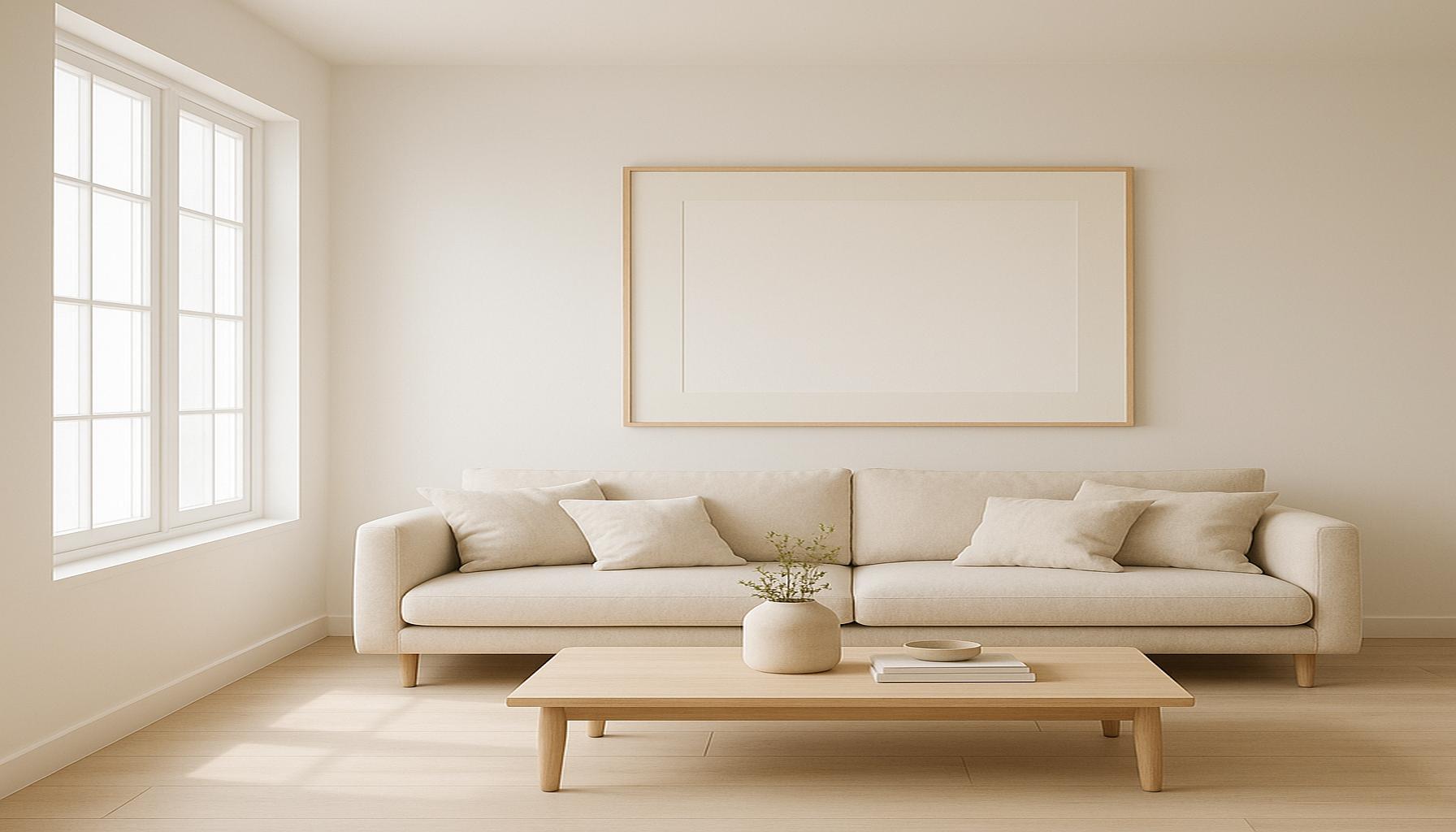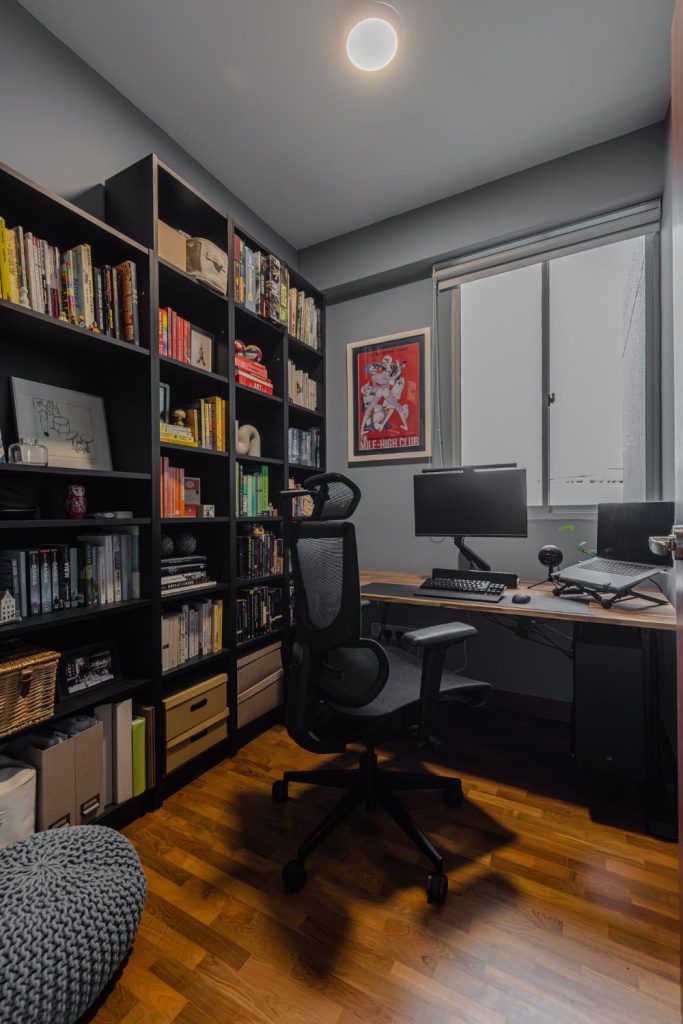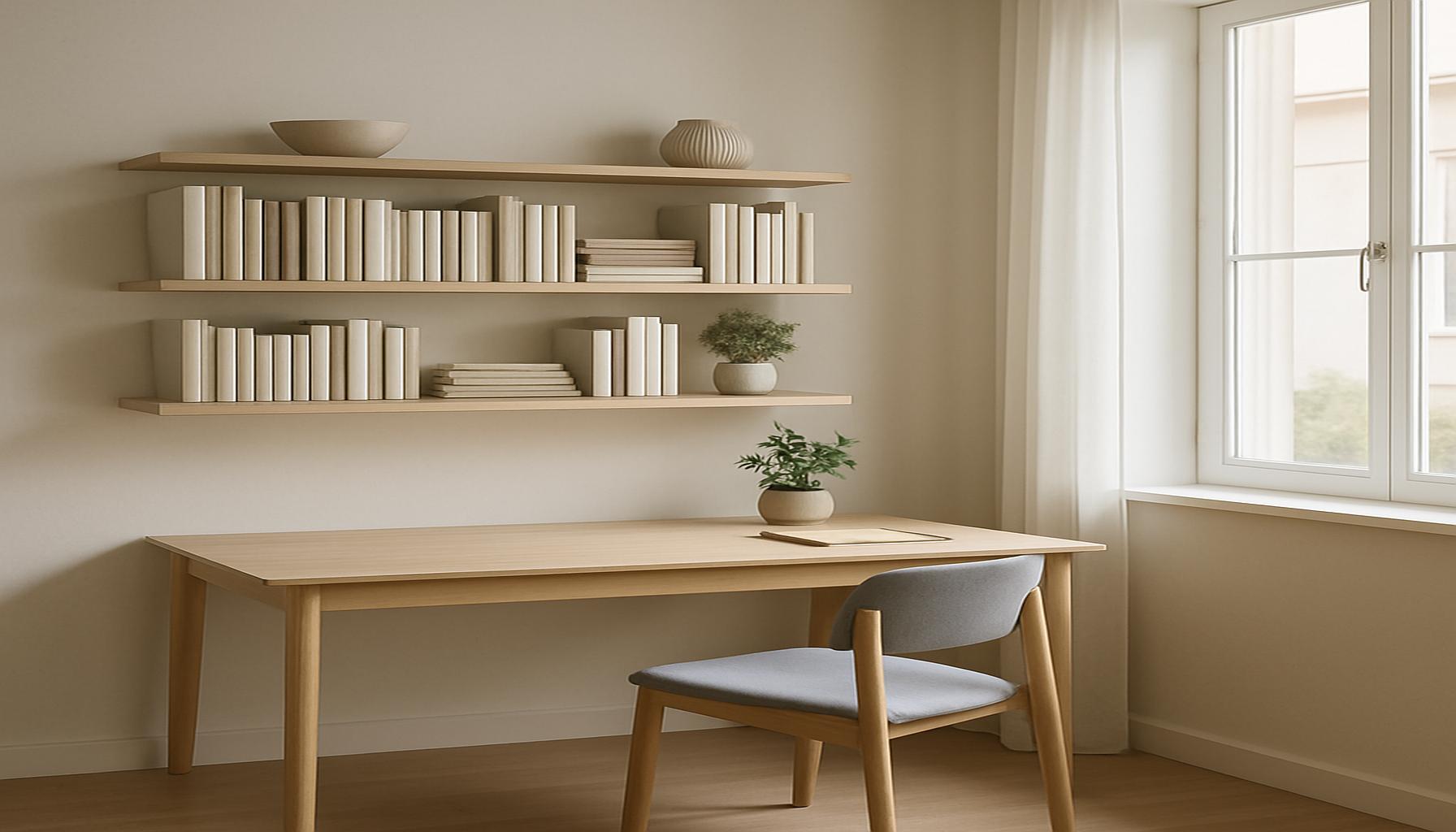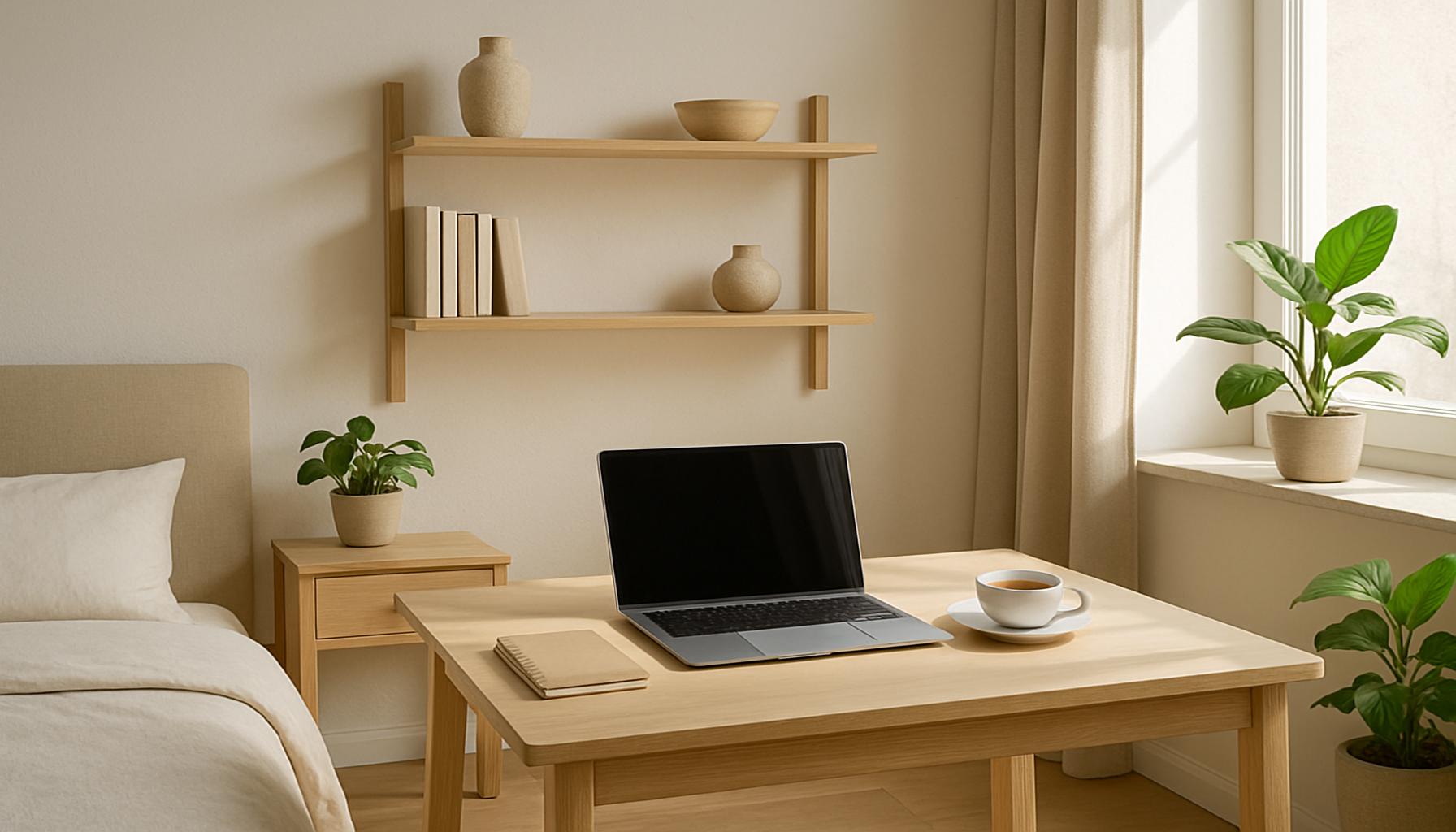The Importance of White Space: Creating Calm and Organized Environments

Understanding the Role of Empty Space in Design
In today’s fast-paced world, the importance of white space, often referred to as negative space, is frequently underestimated. Despite its seemingly blank nature, it plays an essential role in enhancing both aesthetics and functional qualities in various environments, whether digital or physical. This blank area can seamlessly transform cluttered layouts into visually appealing and nurturing spaces, fostering improved focus and tranquility. A deeper understanding of white space reveals how it enhances not just design but also the overall user experience.
Key Benefits of White Space
- Improved Readability: One of the most significant advantages of white space is the boost it provides to text clarity. Strategically placed empty areas guide the reader’s eye smoothly across a page, making information easier to digest. For example, consider the layout of a well-designed magazine article where images and text blocks are interspersed with generous margins. This design facilitates a more enjoyable reading experience, allowing the content to stand out and be absorbed more fully.
- Increased Engagement: Effective use of white space invites and encourages interaction with content. On websites, a clean and unencumbered design invites users to explore more. For illustration, look at the homepage of leading tech brands. Their minimalist design approach not only showcases their products effectively but also enhances user navigation, helping potential customers to engage without feeling overwhelmed.
- Stress Reduction: Calm environments characterized by ample white space can significantly reduce anxiety. This principle extends to workplace design. For instance, creating an office environment with open spaces, natural light, and organized layouts can positively impact employee productivity and mental health, promoting a sense of peace that fosters creativity and focus.
Consider the impact of white space across various contexts:
- A minimalistic website design captivates users by allowing content to breathe and avoiding sensory overload.
- A well-organized office layout fosters productivity by combining open spaces with collaborative areas, inviting teamwork while still offering a personal sanctuary.
- A soothing home environment, adorned with smartly utilized white space, supports relaxation and creativity, whether it’s through a clutter-free living room or a serene bedroom with adequate open areas.
By thoughtfully applying white space in design, individuals can create environments that are not only visually appealing but also enhance mental well-being. As you delve into the intricacies of design, consider how the strategic use of white space emerges as a powerful tool for crafting serene and organized surroundings that cater to both functionality and aesthetics. In an era where every detail matters, embracing the concept of empty space could very well be a step toward a more harmonious life.
DISCOVER MORE: Click here to declutter your digital space
Harnessing the Power of White Space in Design
When we think about design—whether in digital platforms, workplace environments, or home interiors—our focus often centers on colors, graphics, and content. However, recognizing the significance of white space can elevate these environments from merely functional to truly transformative. White space, the intentional absence of content, serves as a powerful foundation that enhances clarity and balance. It creates a visual hierarchy that guides the viewer’s attention, encouraging an effortless engagement with the material presented.

The Effect of White Space on Perception
The first impression a design makes is crucial, and white space plays a pivotal role in shaping that experience. For instance, a website cluttered with text, images, and advertisements can overwhelm users, leading to frustration and ultimately, disengagement. In contrast, a clean interface rich in empty space invites users to explore and interact with the content. According to a study conducted by the Journal of Usability Studies, users found websites with adequate white space more appealing and easier to navigate, resulting in prolonged visits and lower bounce rates.
White Space in Various Design Contexts
The application of white space extends beyond digital mediums; it is equally vital in physical spaces. Here are several contexts where white space can make a noticeable difference:
- Retail Environments: In retail design, strategic use of white space around displays can spotlight products like spotlighting artwork in a gallery. This not only draws the eye but also creates a sense of exclusivity, enhancing the customer experience.
- Graphic Design: For graphic designers, incorporating ample white space can mean the difference between a message that resonates and one that gets lost. Elements that are properly spaced allow for better comprehension and retention of information.
- Office Layout: In an office setting, well-planned white space fosters collaboration while providing individuals with personal areas to focus. Studies show that employees in environments with organized layouts experience greater job satisfaction and less stress, leading to higher productivity levels.
Moreover, the psychological impact of white space cannot be overstated. Environments that embrace empty spaces promote a sense of calm and organization, which is crucial in today’s high-stress landscape. Both designers and users benefit from a mindful application of white space as it supports mental well-being while creating a visually appealing atmosphere.
Ultimately, as we embrace the digital age and navigate busy physical spaces, the integration of white space emerges not merely as a stylistic choice but as a fundamental element in crafting balanced and harmonious environments. Understanding its significance fosters a more thoughtful approach to design, ensuring that spaces serve a functional purpose while also promoting tranquility and clarity.
| Advantages of White Space | Key Features |
|---|---|
| Visual Clarity | White space enhances readability, guiding the eye across the layout smoothly. |
| Enhanced Focus | A clean design reduces distractions, allowing users to concentrate on important content. |
| Aesthetic Appeal | Well-placed white space creates a sophisticated and elegant atmosphere. |
| Improved User Experience | Users are more likely to stay longer in an environment that feels organized and calm. |
The integration of white space in design not only uplifts aesthetics but also significantly enhances user engagement. By providing visual clarity, white space allows important elements to stand out, making the content easier to consume. Furthermore, when environments are stripped of unnecessary clutter, users find it easier to maintain focus on what truly matters, thus leading to better decision-making. Additionally, an organized setting fosters a sense of calm, reducing stress levels. It has been shown that environments with ample white space promote a more positive user experience, inviting users to explore rather than exit quickly due to over-stimulation. The balance between content and white space can create a harmonious interface that invites interaction and keeps the audience engaged, urging them to delve deeper into the offered content.
DISCOVER MORE: Click here to learn about organization strategies
Incorporating White Space into Everyday Life
Beyond professional design contexts, the concept of white space can be seamlessly integrated into our daily lives, offering opportunities to create more organized and serene environments. Whether at home, in school, or within community spaces, the intentional use of white space contributes significantly to emotional well-being and cognitive function.
White Space at Home
Our living spaces are more than mere shelters; they serve as sanctuaries for relaxation, work, and creativity. In interior design, one effective approach is to create open floor plans that emphasize movement and flow. By using furniture sparingly and strategically placing items, homeowners can effectively create zones of calm. For instance, an uncluttered dining area not only invites family meals but also fosters deeper conversations by reducing distractions.
Additionally, the minimalist design trend in homes echoes the principles of white space. By opting for fewer decor items, homeowners can allow their favorite pieces—whether a striking piece of art or a comfortable chair—to take center stage. A study from the American Psychological Association revealed that minimalistic environments encourage creativity and foster a sense of peace, which ultimately leads to reduced anxiety levels.
White Space in Educational Settings
In schools and universities, the arrangement of learning spaces plays a pivotal role in shaping student experiences. Classrooms that incorporate white space often show improved engagement levels among students. This can be achieved by allowing for natural light, facilitating open seating arrangements, and reducing visual clutter. Research conducted by the Harvard Graduate School of Education found that classrooms designed with ample white space not only increased test scores but also improved focus and collaboration among students.
Furthermore, digital learning platforms benefit immensely from white space. E-learning tools that avoid overwhelming users with excessive information make learning more effective and enjoyable. With an optimal balance of text, visuals, and open spaces, these platforms enhance comprehension and retention of knowledge, reflecting the impact of white space even in virtual environments.
The Role of White Space in Community Areas
Cities and towns across the United States have increasingly recognized the value of white space in public parks and recreational areas. These spaces, designed with thoughtful landscaping and adequate open areas, create inviting environments for community gatherings, relaxation, and outdoor activities. Community leaders often invest in creating parks that embrace white space to encourage socialization and physical well-being.
- Parks and Recreational Areas: Well-maintained parks with ample green space not only benefit physical health, but they also promote mental wellness, allowing residents to unwind and reconnect with nature.
- Public Libraries: Libraries that utilize white space in their layouts provide areas for quiet study and collaboration, catering to diverse learning preferences while maintaining an organized, welcoming atmosphere.
- Community Centers: Spaces designed for events and gatherings benefit from open layouts that facilitate movement and interaction, thus enhancing community cohesion.
As society increasingly embraces environments that advocate for mental clarity and organization, the integration of white space will continue to play a crucial role. With its ability to foster calmness and creativity, it’s clear that white space is not merely an aesthetic preference but a fundamental element in building healthier and more productive environments across various aspects of life.
DISCOVER MORE: Click here for valuable tips
Conclusion
In a world that often feels chaotic and cluttered, the strategic use of white space emerges as a pivotal tool for fostering calm and organization in our environments. From the layout of our homes to the design of educational institutions and community spaces, incorporating white space not only enhances aesthetics but also significantly impacts mental well-being. Research has consistently shown that environments characterized by ample white space can lead to heightened creativity, increased focus, and reduced anxiety, underscoring the profound psychological benefits of these minimalist principles.
Moreover, as urban planners and community leaders strive to create more inviting public spaces, the emphasis on white space becomes increasingly relevant. Parks that feature open areas allow for social interactions and rejuvenate our connection with nature, while well-designed libraries and community centers facilitate both quiet reflection and collaborative learning.
As we continue to navigate the complexities of modern life, the importance of intentional design—marked by white space—will become even more apparent. By prioritizing these principles, we not only craft environments that are more visually appealing and functional but also contribute to a healthier, more productive society. As individuals and communities, let us explore and embrace the art of white space, recognizing its role in cultivating tranquility and clarity in our everyday lives.


